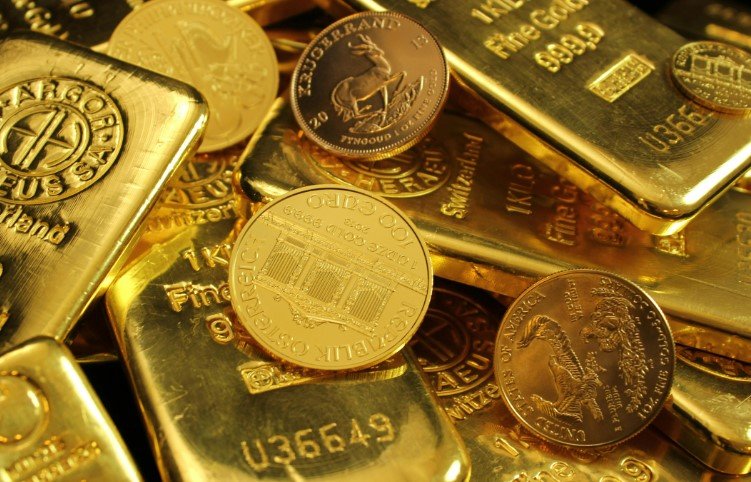Gold has hit an all-time high, surpassing $3,149 per ounce, as investors flock to safe-haven assets. This surge is driven by escalating trade tensions and growing concerns about a potential U.S. recession.
Trade Tensions Fuel Gold’s Ascent
President Donald Trump’s announcement of sweeping reciprocal tariffs has rattled global markets. The proposed tariffs, targeting a broad range of imports, have heightened fears of a full-blown trade war. Investors, seeking refuge from the ensuing uncertainty, have turned to gold, propelling its price to unprecedented levels.
The tariffs are expected to impact goods from major U.S. trading partners, including China, Canada, and the European Union. This move has prompted warnings from economists about potential stagflation—a combination of stagnant economic growth and rising inflation. The auto industry, in particular, is bracing for significant disruptions, with new-car prices potentially increasing by thousands of dollars due to the tariffs.
Recession Fears Amplify Safe-Haven Demand
The specter of a U.S. recession looms larger as financial analysts adjust their forecasts. Goldman Sachs has raised the probability of a recession in the next 12 months to 35%, citing the administration’s willingness to accept short-term economic weakness to achieve policy objectives. This revised outlook underscores the fragility of the current economic expansion and has intensified the flight to safe-haven assets like gold.

The manufacturing sector is already showing signs of strain. The Institute for Supply Management’s manufacturing PMI dropped to 49.0 in March from 50.3 in February, signaling a contraction. Factors contributing to this downturn include slumping new orders, declining factory production, and higher input costs—all exacerbated by tariff concerns.
Central Banks and Investors Bolster Gold Holdings
Central banks have been significant contributors to the rising demand for gold. Since 2022, they have consistently increased their gold reserves, seeking to diversify assets and hedge against geopolitical and economic uncertainties. This sustained accumulation has provided a strong foundation for gold’s bullish trajectory.
In addition to central banks, Western investors are rekindling their interest in gold-backed exchange-traded funds (ETFs). The geopolitical instability in regions like the Middle East and Europe has prompted investors to seek the stability that gold offers. The inflows into these ETFs reflect a broader conviction in gold’s role as a hedge against volatility.
Analysts are divided on gold’s future trajectory. While some, like those at Bank of America and Macquarie Group, project that gold could reach $3,500 per ounce, others caution that increasing gold supply and potential shifts in investor demand could temper these gains.
Market Volatility and Investor Sentiment
Global stock markets have experienced significant volatility amid these developments. The anticipated tariffs have led to heavy losses in Asia-Pacific markets, with Japan’s Nikkei dropping 4% and South Korea’s Kospi down 3%. European markets have also been affected, with major indices like the UK’s FTSE 100 and Germany’s DAX experiencing declines.
In the U.S., markets have been jittery. The Dow Jones opened lower, reflecting investor anxiety over the escalating trade tensions and their potential impact on the economy. This environment has further enhanced gold’s appeal as a safe-haven asset.
The bond market is also signaling caution. Treasury yields have shown signs of recession worries, with investors flocking to the safety of government bonds. This flight to quality is indicative of broader concerns about economic stability in the face of aggressive trade policies and geopolitical uncertainties.
Outlook: Navigating Uncertainty
The convergence of trade tensions, recession fears, and geopolitical instability has created a perfect storm for gold’s ascent. While the Relative Strength Index (RSI) indicates that gold is overbought, the prevailing bullish sentiment suggests that prices could remain elevated in the near term.
Investors should remain vigilant, monitoring developments in trade policies and economic indicators. Diversifying portfolios and maintaining a balanced approach can help mitigate risks associated with market volatility.
As the global economic landscape continues to evolve, gold’s role as a safe-haven asset is reaffirmed. Whether this rally sustains or corrects will depend on how geopolitical and economic events unfold in the coming months.
